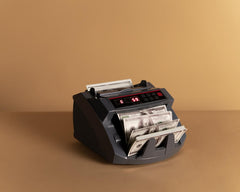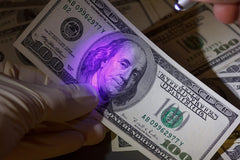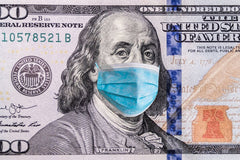Your cart is currently empty.

- Aug, 20 , 21
- 0 comments
How to Sanitize Books and Paper Documents
Books and paper documents are not always considered when it comes to cleaning and disinfecting. However, the SARS CoV-2 virus has put a spotlight on disinfecting all household items, including those you might have not previously thought about. This article will take a look at how to sanitize books and how to sanitize paper documents in a way that does not damage the paper, along with available products that ensure your paper-based materials are adequately cleaned every single time.
To enhance cash management efficiency, explore our state-of-the-art bill counting machine. It significantly reduces staff time on cash-related tasks, streamlines workflows, and enhances precision and reliability in financial operations, leading to improved overall performance and peace of mind.

The Importance of Sanitizing Books and Paper Documents During the COVID-19 Pandemic
Museum and library services are relied on by the general public for information and resources that may not be readily available elsewhere. Public libraries play an important role in communities in sharing and spreading information. Millions of people across the country rely on libraries and library books, and as restrictions are lifting across the country, questions around sanitizing books and paper documents are beginning to be asked. As library books are taken out by many people and make their way into different homes and onto different shelves, the risk of spreading COVID-19 is high.
How to Disinfect Books Using UV Light
Ultraviolet (UV) light has been proven to destroy germs, particularly when UV-C rays are used. There are three main types of UV radiation: UV-A; UV-B; and UV-C. The most effective at eliminating germs are UV-C rays, as they have the shortest wavelength and highest amount of energy - ensuring that they will effectively eliminate harmful pathogens by breaking the molecular bonds of viruses and damaging the DNA of microbes and bacteria. This prevents them from being able to reproduce.
It is recommended to use UV light to disinfect delicate objects such as books and paper documents as this disinfection process cannot damage the books. This makes it especially useful in comparison to other disinfection methods such as using a Lysol disinfectant wipe which can damage the cover of a book if it does not have a cover that isl be able to repel water. Some book covers and the majority of book pages can be considered porous surfaces requiring special precautions to be taken if you are attempting to disinfect them using a damp cloth or disinfectant wipe. A multifunctional sterilizer is ideal for this purpose as it can hold a variety of different objects and disinfect them thoroughly without fear of damaging the paper-based products placed inside.
Give it Time (If You Can)
People need to quarantine and so do books! It is believed that the most effective way to sanitize books is to quarantine them for a 24-48 hour period once they have been returned to the library. It is important to also wash your hands when handling these books, even after the quarantine period. Viruses can live on surfaces such as cardboard, plastic, and stainless steel for anything from a few hours to a few days depending on the surface, therefore it is always important to ensure that all surfaces are cleaned and disinfected regularly. Libraries are quarantining books once they have been returned, but it is also recommended that those taking out books quarantine them at home for a minimum of 48 hours after collecting them. Although libraries take the utmost care to prevent contamination, it’s best to treat all books as if they might have the virus on them
If you do not have the luxury of time, there are other ways to sanitize books and documents. Below are some tips on how to go about this in a way that does not damage paper-based materials.
Tips on How to Sanitize Used Books

Sanitizing books is a tricky procedure as books are made of paper - a fragile material that can easily be damaged. It is recommended to leave book sanitation to the experts to avoid any unnecessary damage and extra expense as you will be required to pay to replace a damaged library book.
Book covers are made of a variety of materials - some are resistant to moisture while others are not. Most hardcover library books are encased with a clear plastic water-resistant cover that can easily be wiped using a damp Lysol disinfectant wipe or cloth. When doing this it is always important to wipe the cover very gently (706) and to make sure that the cloth or wipe that you are using is not too wet and will not damage the cover or the inner pages of the book. It is also an option to cover hardcover books with plastic contact paper that can stick to the book and can also be easily wiped down using the above techniques.
When wiping down book covers ensure that the books are standing upright - this will help covers to dry thoroughly and avoid leaving behind any moisture that might harbor mold or bacteria. It is also important to be aware of the risk of damp pages drying and sticking together.
These tips are useful if you wish to sanitize the surface of your books, however, they cannot protect the inside of the book which consists of many pages and little nooks and crannies that are hard to sanitize and dry effectively. This is why it is highly recommended to quarantine your books and let time do the majority of the work for you, especially when it comes to the inside of the books.
The COVID-19 pandemic has shed a light on the importance of sanitizing objects that we come into contact with daily, as well as practicing basic hygiene such as washing your hands with soap and water frequently. Objects that are public property, such as library books and archival documents, are particularly at risk of being contaminated as they are passed among many different people and enter a variety of different households and environments. The tips in this article have shown how paper-based materials can be sanitized to prevent the incubation and spread of germs while also preserving the quality of the books that are being cleaned. Follow book cleaning guidelines closely to prevent damaging this delicate and precious resource.
Search
Custom Menu
Recent Post
Archive
- April 2022
- September 2021
- August 2021
- July 2021
- March 2021
- February 2021









